Goole, Gateway to the Ouse
The day dawned bright and sunny, so we got off to an early start up the New Junction canal. From the map I thought it was going to be a fast run as it is wide and straight and there is only one lock, but there were lift bridges every few hundred yards, so I got to practice my docking skills letting Paula off to work the bridges. Happily the were all electric, so there was no grunting to be done.

This ominous looking structure is not a lock or a bridge, but guillotine style gates at both ends of an aqueduct. I’m not sure if they are for flood control, or so that the aqueduct can be drained for repairs.
From the New Junction, we turned onto the main branch of the Aire and Calder canal towards Goole. The A&C and the New Junction are huge, able to take barges six times the size of Wharram Percy. It still carries some commercial traffic, though we did not see any today. In fact, we had the canal almost to ourselves, with only a couple of boats coming in the other direction. Paula asked me suspiciously what we were doing here. I muttered something about industrial heritage, but actually I just like the name Goole. Try saying it with lots of O’s. Gooooooooooooooooooooole.
The battle swans of the Aire and Calder have an air force.
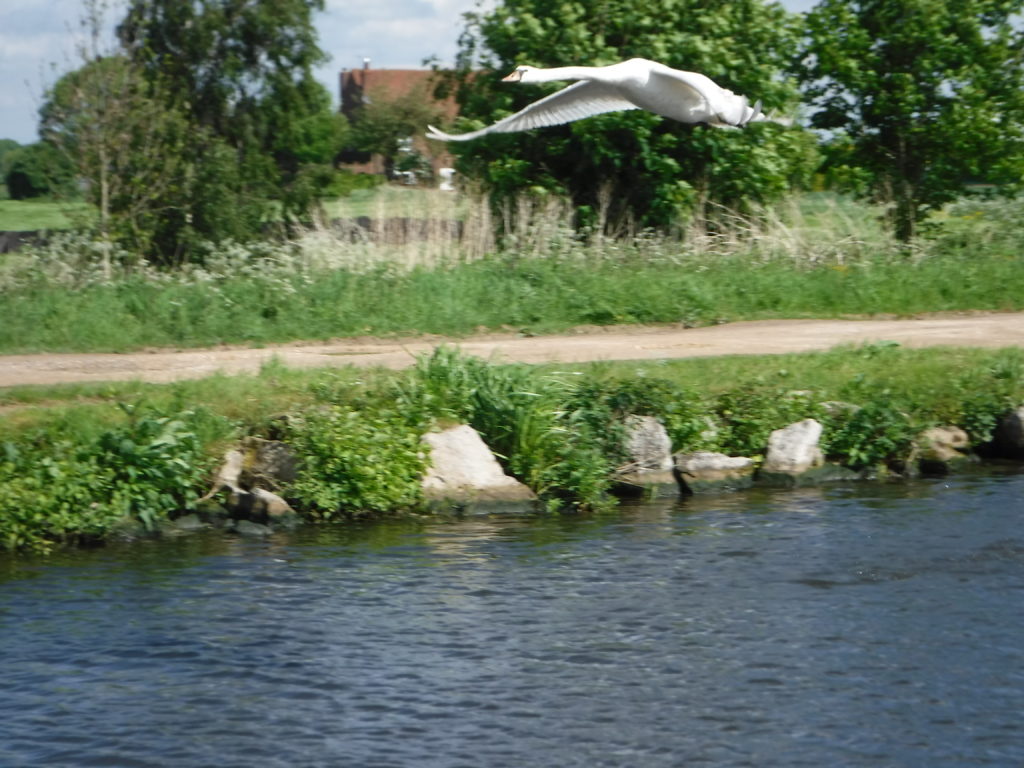
While I was planning what to do if the swans circled around for a bombing run, Paula was dealing with the laundry. It took a while to get the washer started as the water supply to it was turned off, but by the time we hit the A&C it was running. I heard the diesel engine grunt and slow down as the inverter started to draw all the power it needed from our high power alternator. Though we have batteries to drive the inverter, the washer/dryer draws so much that we have to have the engine running when using it. Now, as washer/dryers go, ours is a really good washer. The clothes were still not dry when we moored up at Goole, and as I wanted to turn the engine off, Paula hung out the laundry, which of course meant that rain was on the way.
Goole is where the Aire and Calder connects with the River Ouse, (pronounced “ooze”) which runs into the Humber and thence to the North Sea. This is not to be confused with the Great Ouse, the Little Ouse, the Sussex Ouse, or the Orkney Ouse. The name comes from the Celtic word for water and shows that the Celts had no imagination.
“Hey, what shall we call that big long ditch full of moving water over there?”
“Let’s call it, um, the water. Yeah, that’s right. Let’s call it the water.”
The Ouse is navigable by smaller and less charismatic ocean going vessels, so Goole was developed as a port in the 1820s to transfer goods to and from canal barges. In particular coal was exported. Goole is still a major industrial port, though most of the goods are now transferred to rail or road rather than barge. They skyline is dominated by two water towers, called Salt and Pepper by the locals, and “Oh, look, there’s a giant brick penis over there,” by Paula.
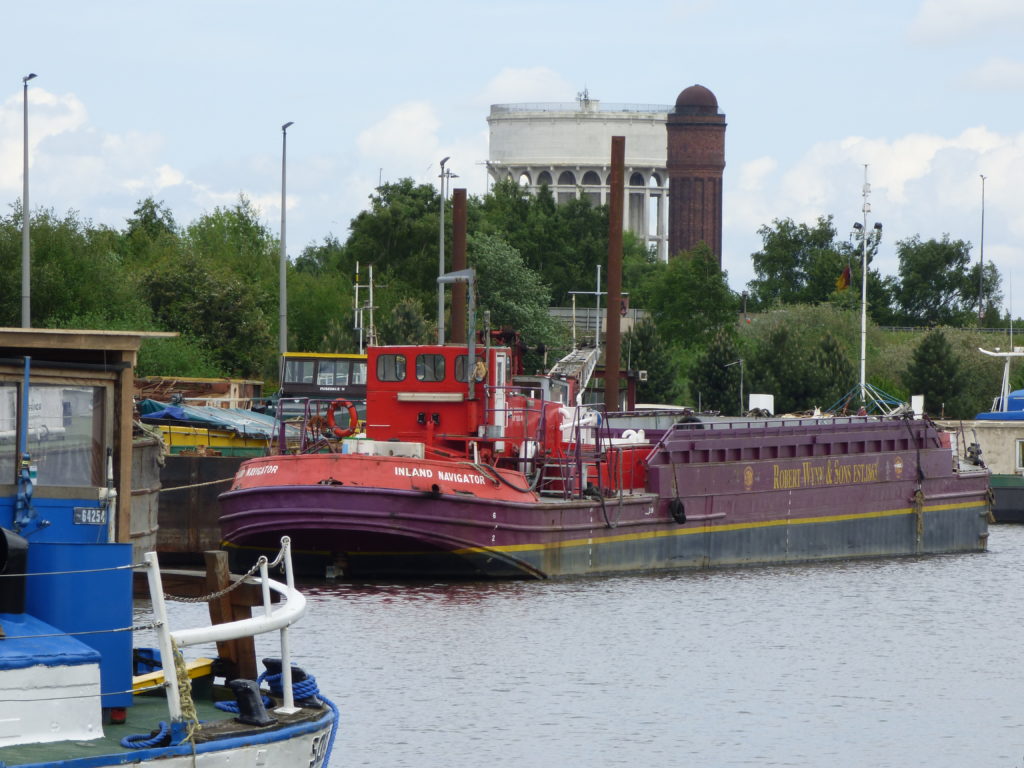
There’s an interesting story behind Pepper. Goole was a company town built by the Aire and Calder canal company, who having graciously provided the residents with a canal did not think it necessary to provide any other water source for, say, bathing or drinking. The result was cholera epidemics in 1832 and 1848 which killed almost two hundred people. The industrial magnates rushed to correct this problem and only 37 years later in 1885 Pepper was constructed to provide clean piped drinking water. That was less than the life expectancy in 19th Century Yorkshire. I used to think that Flint, Michigan had it bad, but the poor buggers in Goole had to wait a lifetime to get water they could drink safely. Thanks, capitalism.
The research for this post is coming from a booklet called “50 Fascinating Facts About Goole” which they hand out at the local library. I’m doing dead tree research because if you try to do a web search on “Goole”, it redirects you to “Google” even if you do the search on Bing. Any time now we can expect Google to sue them for typo squatting, and demand that they rename to town to Yahoo-Upon-Ouse.
Not all of the 50 facts in the booklet are entirely fascinating, though knowing that the Tesco we went shopping in was on the site of the old Goole Workhouse certainly made the beef gruel we had for dinner taste more authentic. The most fascinating fact was P G Wodehouse got the name Jeeves from a Goole Town cricket player called Percy Jeeves, a literary career change comparable with James Bond giving up ornithology for espionage.
The walk into town took us through the industrial magnificence of Goole.
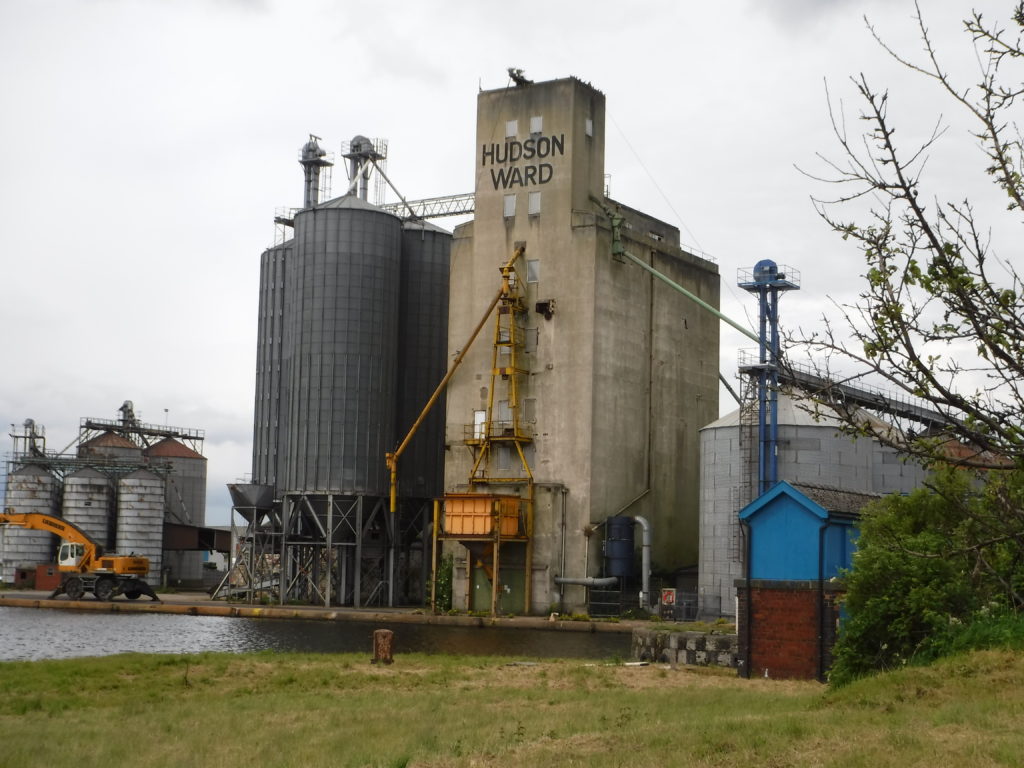
On Saturday afternoon the main street was strangely deserted.
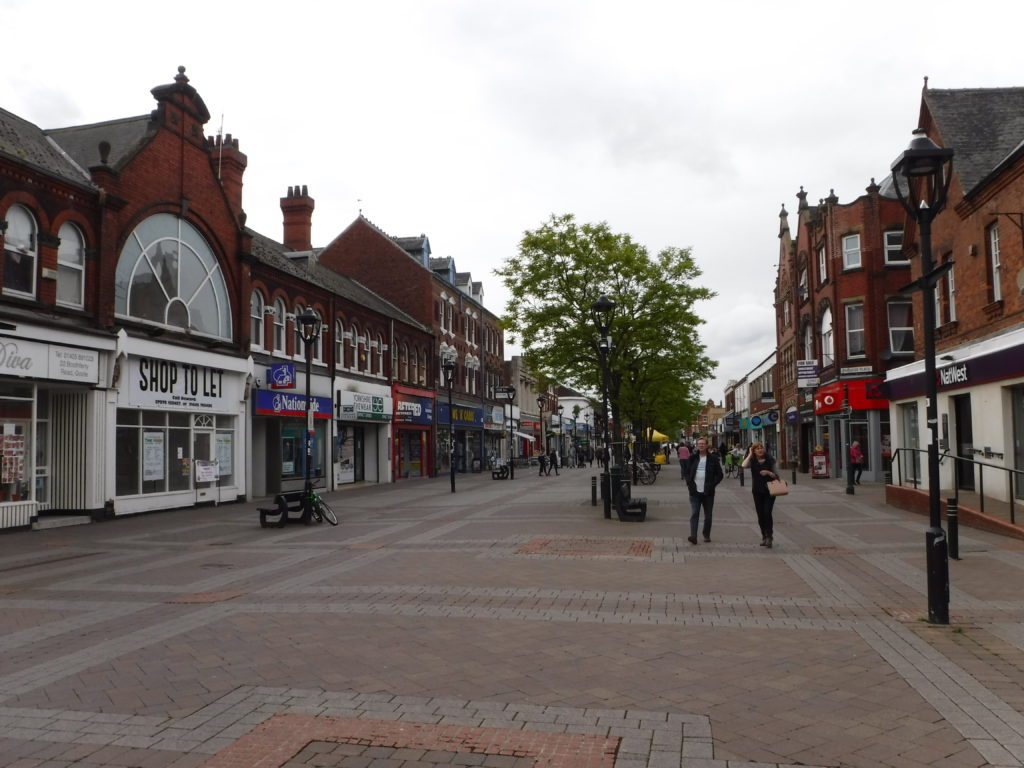
Maybe the swans set off an air raid warning.
The museum at Goole has a room full of ship paintings by Reuben Chappell (1870-1940).
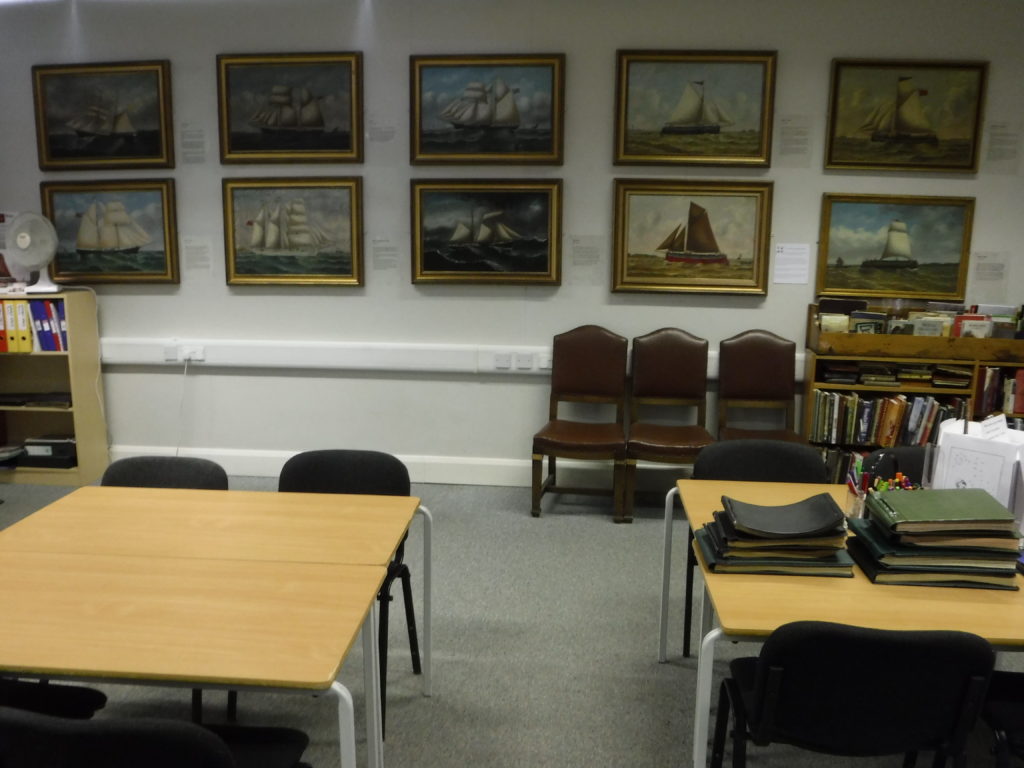
Chappell did for ship painting what McDonalds did for hamburgers. When a ship came into port he could sketch it quickly, then run back to the studio and paint it on a prepared seascape, and have it hanging in the captain’s cabin before the next tide. Many mariners bought his work. It’s estimated he painted around 12,000 pictures in his career. In fact, his work is so plentiful that we found one of his paintings screwed to an outside brick wall walking back to our boat.

It’s part of a Chappell art trail, put on by Goole Civic Society who are attempting to “protect and celebrate the town’s unique heritage” by exposing it to the Yorkshire climate.
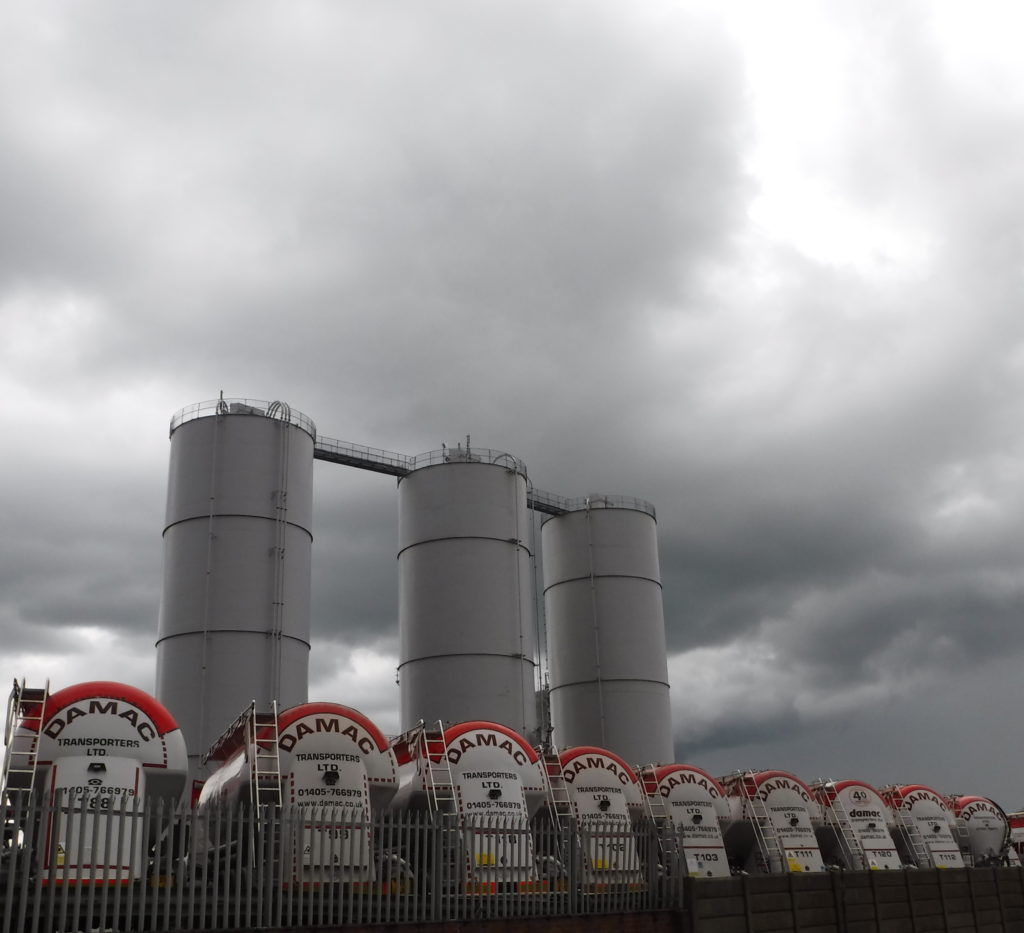
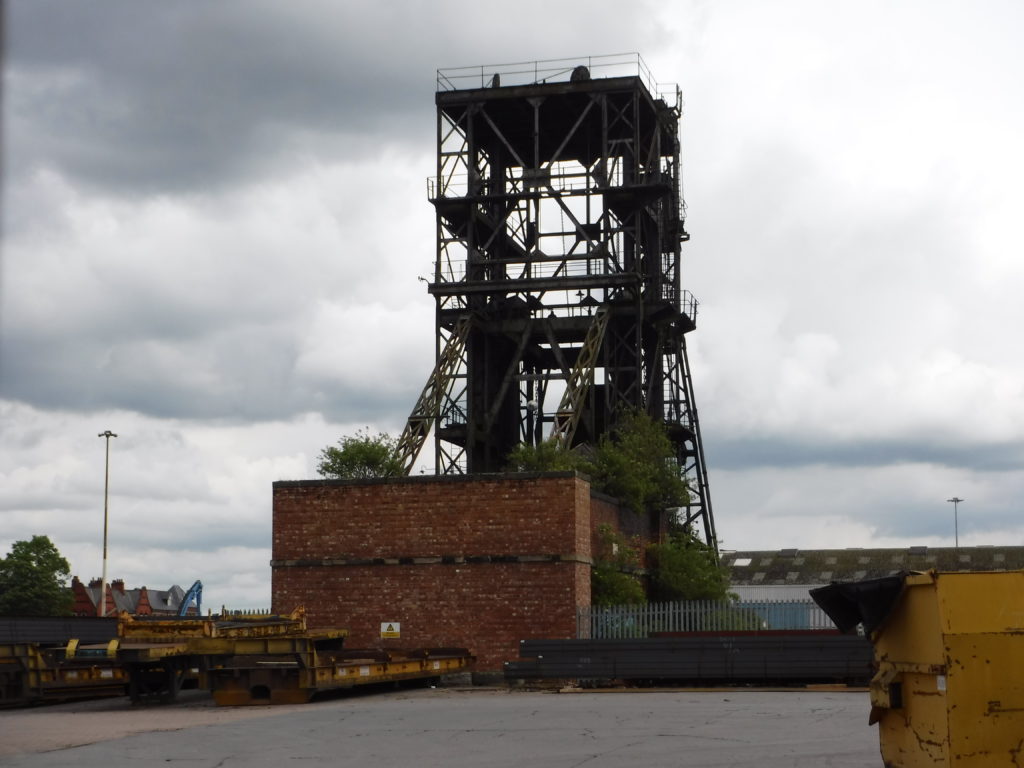

One thought on “Goole, Gateway to the Ouse”
Coming from a town just south of there, I played music in Goole clubs and pubs on many occasions. In those days the main forms of entertainment were drinking and fighting…Many of the towns around there, Thorne, Selby etc, were no different, although mainly coal mining villages.